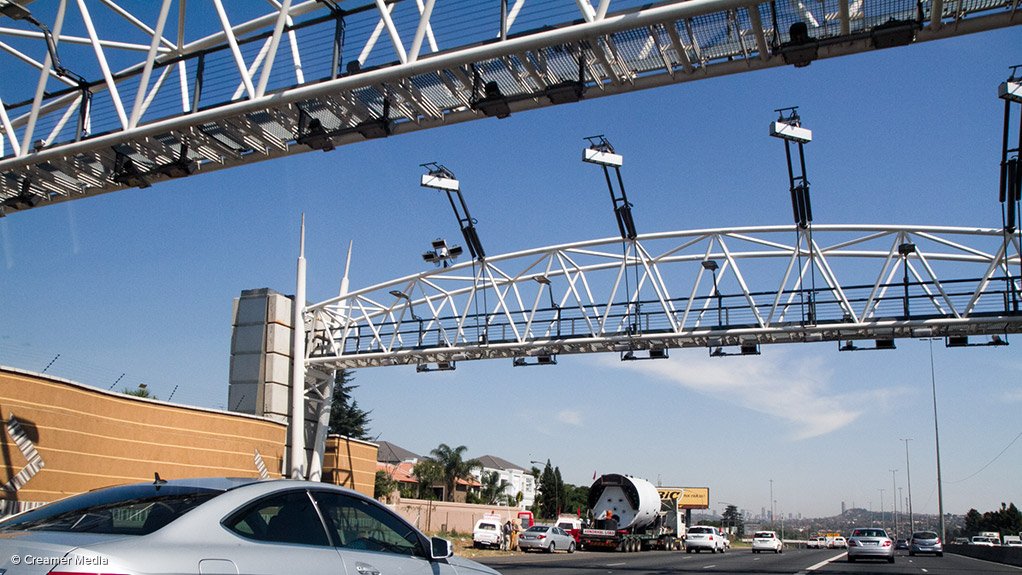Govt infrastructure spend continues to grow, albeit slower
Government’s investment in infrastructure will continue to grow, but not as rapidly as in the past, with the focus shifting to improving value for money in infrastructure delivery, the National Treasury highlighted on Wednesday, noting that more than R800-billion will be invested in public-sector infrastructure expenditure over the medium-term expenditure framework (MTEF) period.
In its Medium-Term Budget Policy Statement (MTBPS), the National Treasury outlined that its proposed budget allocations for infrastructure stood at R542-billion, while infrastructure plans by large State-owned companies exceeded R400-billion over the next three years.
Finance Minister Nhlanhla Nene on Wednesday noted that it was one thing for government to finance State-owned companies that were responsible for growth-enhancing infrastructure investments. “Relief of entities that should be self-sustaining or that have mismanaged their commercial activities is quite another.”
He emphasised that the support of such entities remained a serious risk to the medium-term fiscal outlook and, as such, work had started on a legislative framework to regulate State-owned entities, which sought to address governance challenges.
Meanwhile, the National Treasury highlighted that government would continue to help municipalities plan and implement urban development projects that catalyse spatial change, with R229-billion allocated to municipalities for infrastructure over the MTEF period.
Projects currently receiving support included the R20-billion Cornubia project and Warwick Junction in eThekwini, the Sleeper Site development in Buffalo City and the Athlone power station redevelopment in Cape Town. More projects were due to enter the preparation pipeline shortly.
While cities borrowed regularly to fund infrastructure investment, the National Treasury pointed out that there had been a mismatch between borrowing periods and project lifespans.
Local government had spent 91% of allocated infrastructure budgets in 2014/15, up from 86% in 2013/14 and 77% in 2012/13.
To build on this progress, and improve value for money in infrastructure investment, government would introduce a medium-term capital budgeting framework, which included new appraisal tools for capital projects, strengthened procurement regulations, measures to lock in resources for operations and maintenance and greater transparency on the full life-cycle costs of large capital projects.
New regulations that would come into effect in April 2016 also included a compulsory standard for infrastructure procurement and delivery management.
Government would further invest more in the refurbishment and renewal of ageing infrastructure, while continuing to expand social infrastructure to underserved areas, allocating R130-billion to roads and public transport infrastructure and R20-billion to extend the electricity grid to poor households.
It also earmarked R60-billion for public housing, R55-billion for water infrastructure, R43-billion in school buildings and R3-billion in health facilities and equipment.
TRANSPORT
Meanwhile, the National Treasury noted that the new tolling dispensation on the Gauteng Freeway Improvement Project (GFIP), where reduced caps and a single tariff for all users was introduced, had created greater certainty about South African National Roads Agency Limited’s (Sanral’s) finances and restored confidence in its investment programme.
“Sanral, which holds the second-largest share of the National Treasury’s guaranteed debt, has maintained its investment-grade rating and remains well-funded over the MTEF period,” the National Treasury said in a statement, noting that total guaranteed support to the agency stood at R39-billion, including R32-billion in committed guarantees.
However, it highlighted that the reduction in toll fees had created a long-term revenue shortfall that would be shared between national government and the Gauteng provincial government. In the first year of the new dispensation, an allocation of R301-million would be made to Sanral.
The National Treasury added that, to improve the efficiency of investments in the secondary road network, a new performance component, incorporating efficiency indicators for managing road networks would be introduced in the Provincial Roads Maintenance Grant.
Comments
Press Office
Announcements
What's On
Subscribe to improve your user experience...
Option 1 (equivalent of R125 a month):
Receive a weekly copy of Creamer Media's Engineering News & Mining Weekly magazine
(print copy for those in South Africa and e-magazine for those outside of South Africa)
Receive daily email newsletters
Access to full search results
Access archive of magazine back copies
Access to Projects in Progress
Access to ONE Research Report of your choice in PDF format
Option 2 (equivalent of R375 a month):
All benefits from Option 1
PLUS
Access to Creamer Media's Research Channel Africa for ALL Research Reports, in PDF format, on various industrial and mining sectors
including Electricity; Water; Energy Transition; Hydrogen; Roads, Rail and Ports; Coal; Gold; Platinum; Battery Metals; etc.
Already a subscriber?
Forgotten your password?
Receive weekly copy of Creamer Media's Engineering News & Mining Weekly magazine (print copy for those in South Africa and e-magazine for those outside of South Africa)
➕
Recieve daily email newsletters
➕
Access to full search results
➕
Access archive of magazine back copies
➕
Access to Projects in Progress
➕
Access to ONE Research Report of your choice in PDF format
RESEARCH CHANNEL AFRICA
R4500 (equivalent of R375 a month)
SUBSCRIBEAll benefits from Option 1
➕
Access to Creamer Media's Research Channel Africa for ALL Research Reports on various industrial and mining sectors, in PDF format, including on:
Electricity
➕
Water
➕
Energy Transition
➕
Hydrogen
➕
Roads, Rail and Ports
➕
Coal
➕
Gold
➕
Platinum
➕
Battery Metals
➕
etc.
Receive all benefits from Option 1 or Option 2 delivered to numerous people at your company
➕
Multiple User names and Passwords for simultaneous log-ins
➕
Intranet integration access to all in your organisation





















